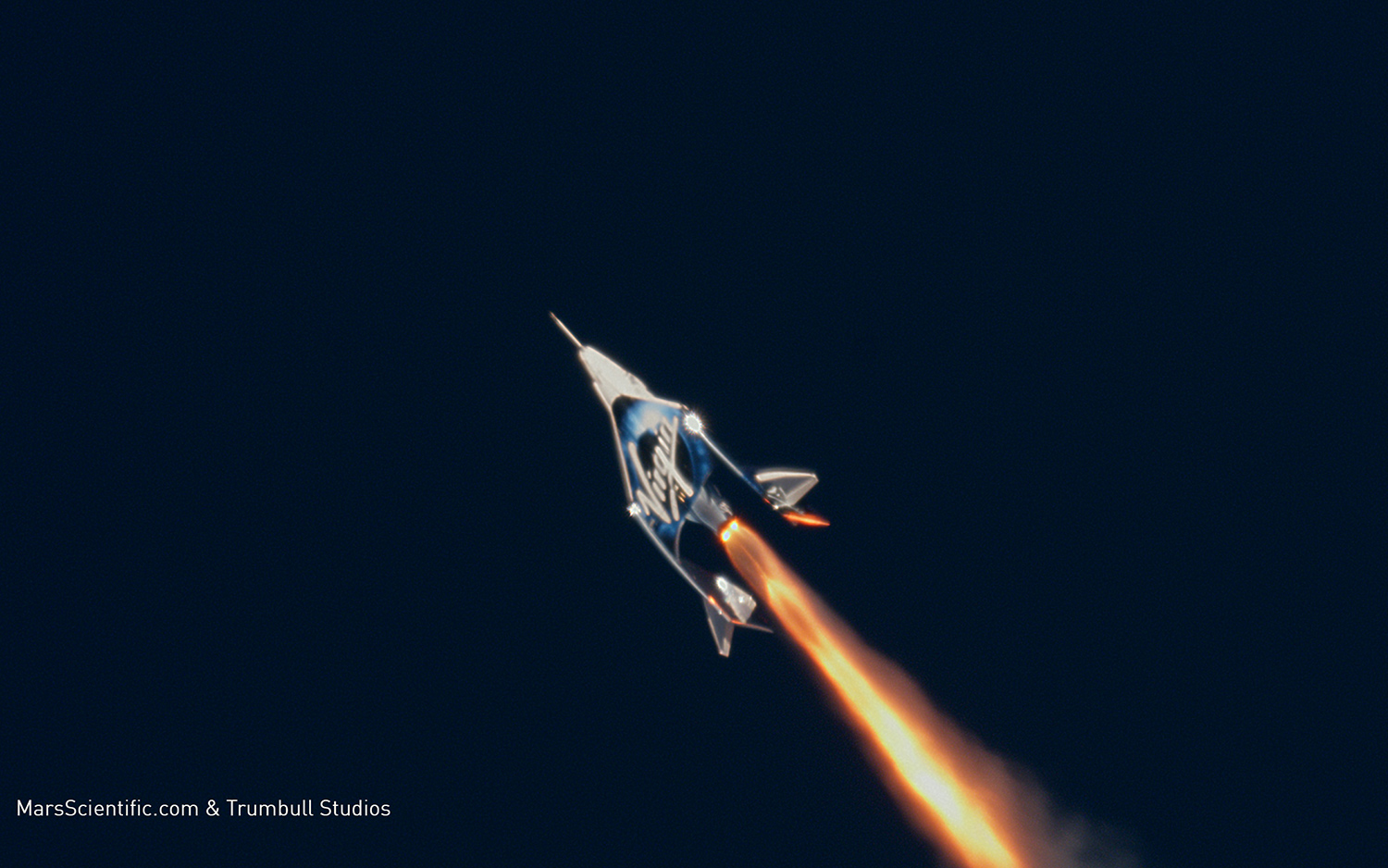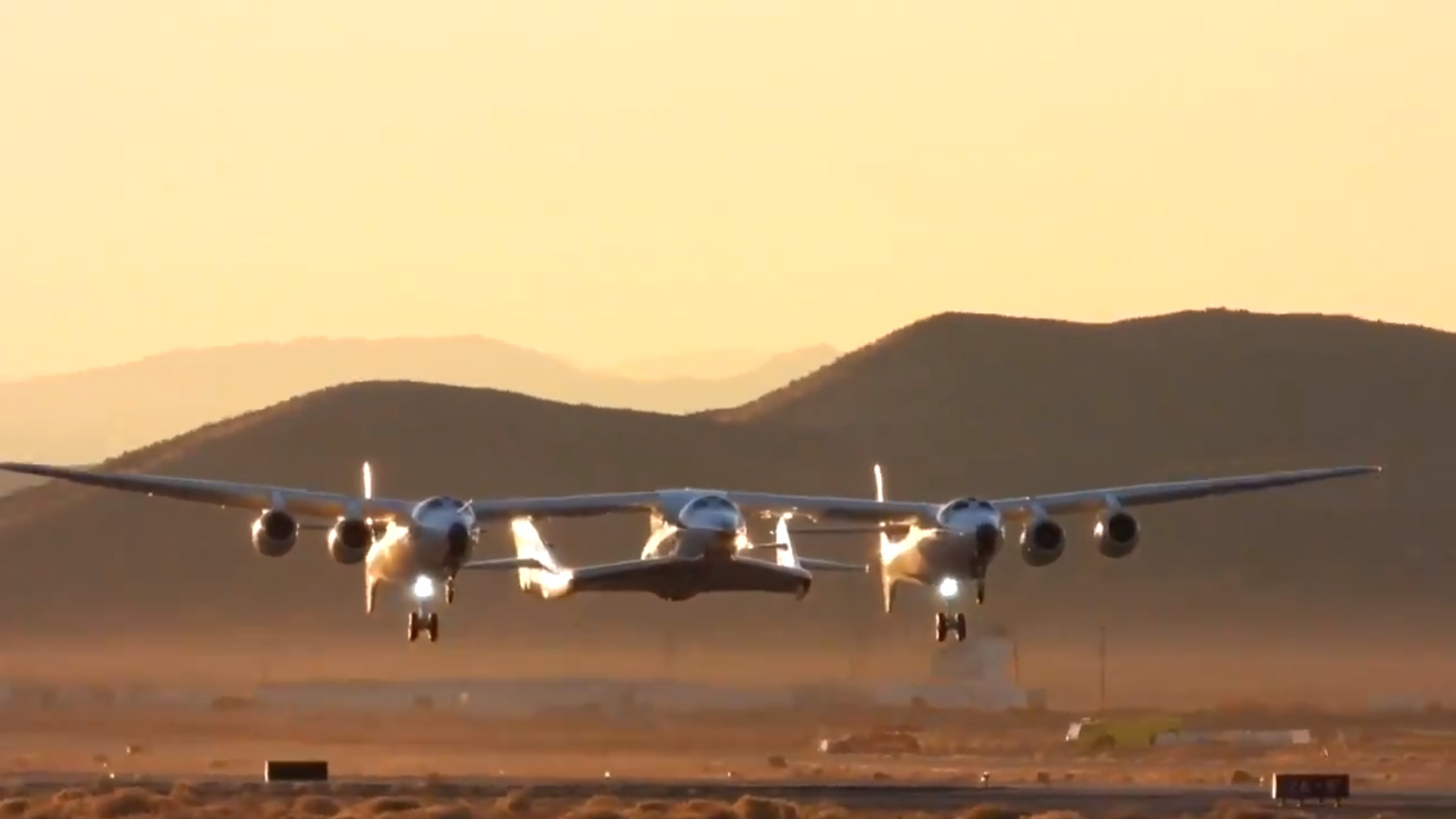Virgin Galactic's SpaceShipTwo Reaches Space for 1st Time in Historic Test Flight!
For the first time ever, Virgin Galactic has reached space — by one definition, anyway.
Virgin's VSS Unity suborbital spaceliner reached a maximum altitude of 51.4 miles (82.7 kilometers) during a rocket-powered test flight over California's Mojave Desert today (Dec. 13) after firing its hybrid rocket motor for 60 seconds, company representatives said.
That's above the 50-mile (80 km) boundary that the United States Air Force uses when handing out astronaut wings, but below the more famous "Karman Line" at 62 miles (100 km) up. The Karman Line is perhaps more commonly accepted; for example, it was the target altitude for the Ansari X Prize, which offered $10 million to the first private team to launch a reusable crewed craft to space twice within a two-week span. [In Photos: Virgin Galactic's 1st Trip to Space with SpaceShipTwo Unity]

That prize was collected in October 2004 by the group behind SpaceShipOne, whose design Virgin Galactic adapted for VSS Unity and its other piloted, six-passenger spaceliners (which are collectively termed SpaceShipTwo vehicles).
"SpaceShipTwo, welcome to space," Virgin Galactic representatives said via Twitter during today's flight.
Today's flight began at just past 10 a.m. EST (1500 GMT) when VSS Unity took to the skies beneath its WhiteKnightTwo carrier plane, VMS Eve, from the Mojave Air and Space Port. Eve dropped Unity at an altitude of about 50,000 feet (15,000 meters), at which point pilot Mark Stucky and co-pilot Frederick C.J. Sturckow fired up the spaceliner's onboard rocket motor.
The engine burned for 60 seconds, accelerating Unity to a maximum velocity of Mach 2.9, or 2.9 times the speed of sound, Virgin Galactic representatives said. Today's mission ended at 11:15 a.m. EST (1615 GMT), after the spaceliner touched down at Mojave in a runway landing.
Get the Space.com Newsletter
Breaking space news, the latest updates on rocket launches, skywatching events and more!
The flight was the fourth rocket-powered test mission of VSS Unity, which Virgin Galactic officially unveiled in February 2016. The other three powered tests occurred in April, May and July of this year, and took Unity to maximum altitudes of 16.0 miles, 21.7 miles and 32.3 miles (25.7, 34.9 and 52 km), respectively.

When it's fully up and running, VSS Unity will carry passengers on brief trips to suborbital space, for $250,000 per ticket. These missions will allow customers to experience a few minutes of weightlessness and also see the curvature of Earth against the blackness of space, company representatives have said.
Virgin Galactic envisions SpaceShipTwo as a prolific research vehicle as well, and the spaceliner has already toted scientific experiments on its test flights. Today's mission, in fact, featured four NASA-sponsored research payloads — the first ones to make it aboard SpaceShipTwo via the agency's Flight Opportunities Program.
These experiments are investigating how dust behaves on planetary surfaces; how liquids and gases interact in microgravity; how microgravity affects plant growth; and how to reduce the vibrational loads on scientific payloads during launch, re-entry and landing.
"The anticipated addition of SpaceShipTwo to a growing list of commercial vehicles supporting suborbital research is exciting," Ryan Dibley, Flight Opportunities campaign manager at NASA's Armstrong Flight Research Center in Edwards, California, said in a statement. "Inexpensive access to suborbital space greatly benefits the technology research and broader spaceflight communities."
VSS Unity is Virgin Galactic's second SpaceShipTwo vehicle. The first, VSS Enterprise, broke apart during a rocket-powered test flight on Oct. 31, 2014. The tragic accident claimed the life of co-pilot Michael Alsbury and seriously injured pilot Peter Siebold.
Virgin Galactic traced the cause of the accident to Enterprise's "feathering" re-entry system, which was deployed too early in the flight. The company instituted measures to make sure such a problem could not recur on VSS Unity and other vehicles, Virgin Galactic representatives have said.
Mike Wall's book about the search for alien life, "Out There" (Grand Central Publishing, 2018; illustrated by Karl Tate) is out now. Follow him on Twitter @michaeldwall. Follow us @Spacedotcom or Facebook. Originally published on Space.com.
Join our Space Forums to keep talking space on the latest missions, night sky and more! And if you have a news tip, correction or comment, let us know at: community@space.com.

Michael Wall is a Senior Space Writer with Space.com and joined the team in 2010. He primarily covers exoplanets, spaceflight and military space, but has been known to dabble in the space art beat. His book about the search for alien life, "Out There," was published on Nov. 13, 2018. Before becoming a science writer, Michael worked as a herpetologist and wildlife biologist. He has a Ph.D. in evolutionary biology from the University of Sydney, Australia, a bachelor's degree from the University of Arizona, and a graduate certificate in science writing from the University of California, Santa Cruz. To find out what his latest project is, you can follow Michael on Twitter.









